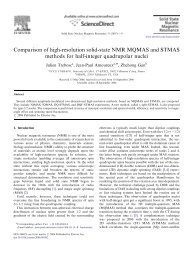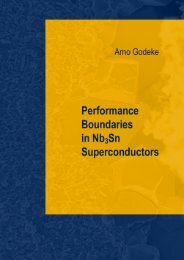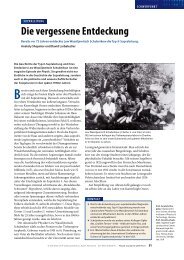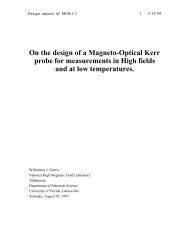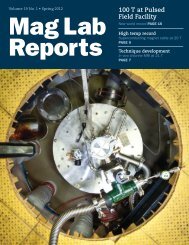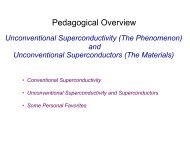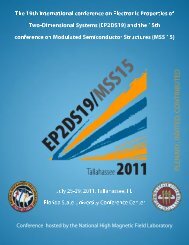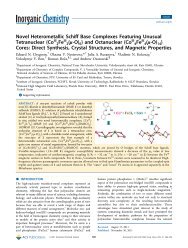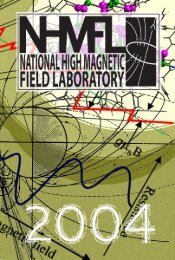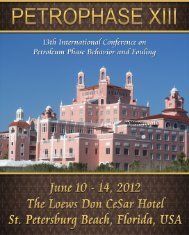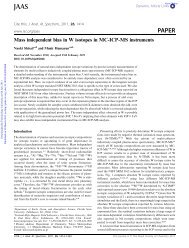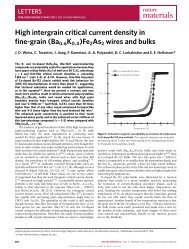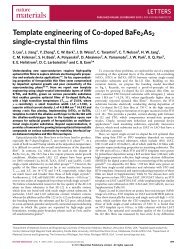Microscopes and Crystals - National High Magnetic Field Laboratory
Microscopes and Crystals - National High Magnetic Field Laboratory
Microscopes and Crystals - National High Magnetic Field Laboratory
Create successful ePaper yourself
Turn your PDF publications into a flip-book with our unique Google optimized e-Paper software.
ACTIVITY 13: EXPLORING MICROSCOPES<br />
m6: <strong>Microscopes</strong> <strong>and</strong> <strong>Crystals</strong><br />
Students have actually formed a plano-convex<br />
lens. The more water that is added to the circle,<br />
the thicker the “lens” is going to be;<br />
consequently, the focal point <strong>and</strong> the<br />
magnification will change. As students first<br />
begin to move the “lens” further away from<br />
the newsprint, the image grows larger. If they<br />
continue to move the lens away from the page<br />
it will become fuzzy <strong>and</strong> when it comes back<br />
WHAT’S GOING ON HERE?<br />
into focus the image will appear upside down.<br />
This is because of the way the lens bends the<br />
light traveling from the page to your eye. When<br />
the lens is close to the page, you see what is<br />
known as a virtual image. This is an upright<br />
image that is larger than the image on the page.<br />
As you move the h<strong>and</strong> lens closer to your eye<br />
<strong>and</strong> away from the page, you see what is called<br />
a real image, which is upside down.<br />
Part 2<br />
1. Students look at the letter “e” through the h<strong>and</strong> lens provided in the package.<br />
2. Recording their observations, students will compare what they see through the h<strong>and</strong> lens<br />
with what they saw using the water drop magnifier.<br />
3. Students will look at the colored paper from the comics (like they did with the water drop<br />
magnifier). Students should notice <strong>and</strong> record any similarities <strong>and</strong> differences they may see<br />
in these images in their Science Notebooks. They might comment on the focal length, the<br />
clarity of the image or colors they are able to see.<br />
Part 3<br />
1. Students will be using the field microscope included in the package for the last part of this<br />
activity. They will be looking at the newsprint <strong>and</strong> the colored paper from the comics using<br />
this microscope.<br />
2. If the paper is too thick for light to pass through the paper from the mirror, then another<br />
student can shine the flashlight on the slide so that a good image will be seen. It is suggested<br />
that students be made aware of the functions of the parts of these field microscopes, how to<br />
focus, <strong>and</strong> how to place the specimens on the stage of the microscope.<br />
*The field microscope magnifies 50 times (50X) <strong>and</strong> when using the compound eyepiece it<br />
increases the magnification of the microscope 2-4 times. Most of the time students will be<br />
using the microscopes without the compound eyepiece.<br />
SCIENCE, OPTICS & YOU GUIDEBOOK<br />
- 121 -



